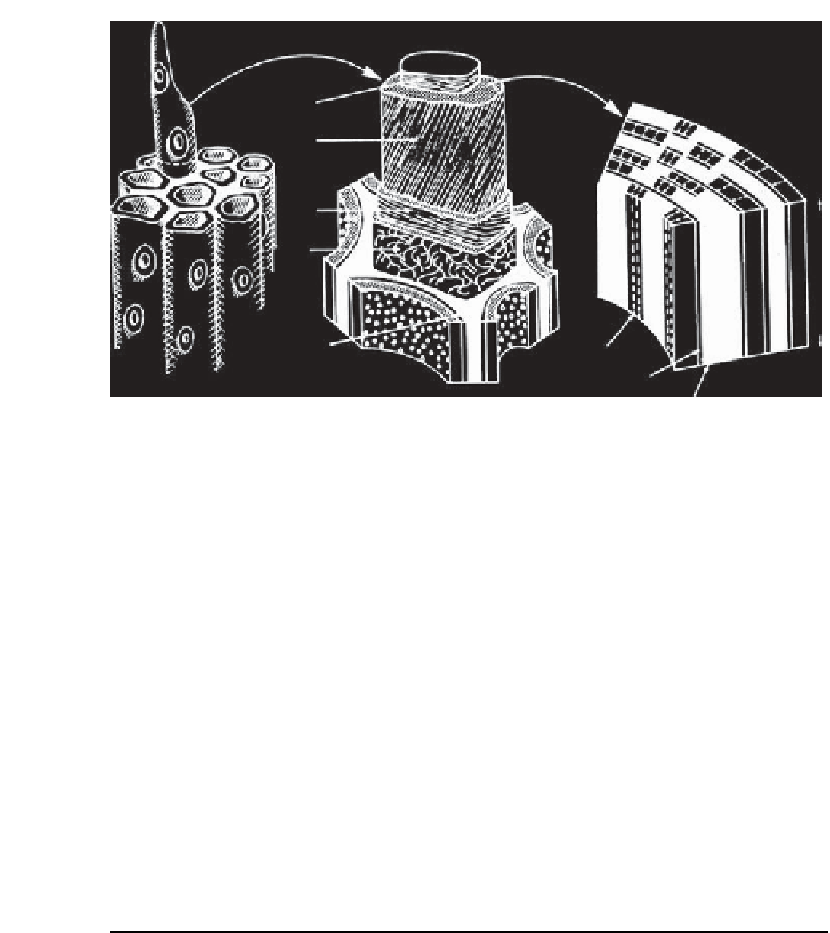Environmental Engineering Reference
In-Depth Information
S3
S2
S1
P
M.L.
Cellulose ibrils
Hemicellulose
Lignin-Hemicellulose
matrix
FIGURE 2.6
Schematic illustration of the molecular architecture of wood tissue, showing
the relationship of contiguous cells (left), cutaway view of the cell wall layers (center), and
one depiction (from Goring, 1977) of the relationship of the lignin, hemicelluloses, and
cellulose in the secondary wall. Recent evidence suggests a more intimate admixture of the
lignin and hemicelluloses than illustrated here (R. Atalla, personal communication.) The
diameter of each cell is approximately 25
μ
m. S1-S3, secondary cell wall layers; P, primary
wall; and M.L., middle lamella. (Source: Reproduced with permission from Kirk and Cullen
(1998). © John Wiley & Sons.)
TABLE 2.4 Chemical composition of common lignocellulose feedstock (db)
Cellulose
(wt%)
Hemicellulose-derived
C
6
sugars (wt%)
Hemicellulose-derived
C
5
sugars (wt%)
Lignin
(wt%)
Biomass type
Softwood
40-48
12-15
7-10
26-31
Hardwood
30-43
2-5
17-25
20-25
Cereal straw
38-40
2-5
17-21
6-21
Maize straw
35-41
2
15-28
10-17
Rape straw
38-41
—
17-22
19-22
Recovered paper
50-70
—
6-15
15-25
Adapted from Kamm et al. (2006).
food and animal feed (e.g., olive or sunflower oil, animal fats, and sucrose from sugar-
cane) but also as lubricants, rubbers, pharmaceuticals (e.g., antibiotics and vitamins
synthesis), dyes, and even cosmetics (e.g.,
Jojoba
oil) (Biermann et al., 2006; Kripp,
2006). They are also used as feedstocks for many first-generation biofuels based on
vegetable oils. When associated with the use of the edible part of the plant only for
energy carrier generation, the product is called a first-generation biofuel.











Search WWH ::

Custom Search